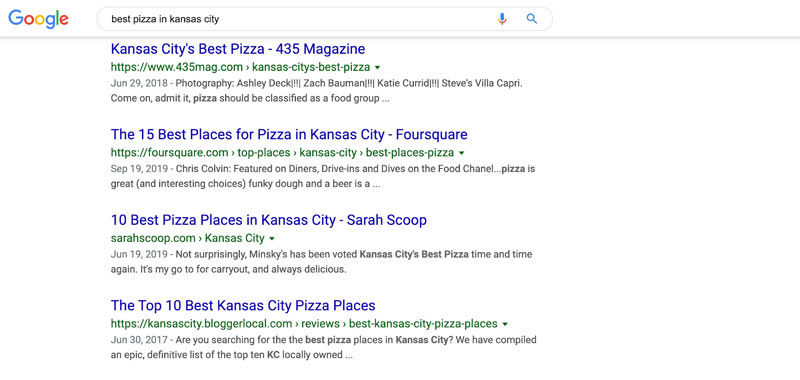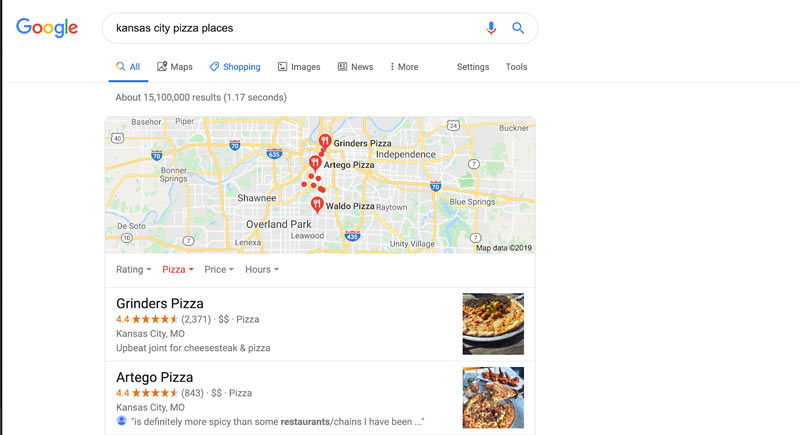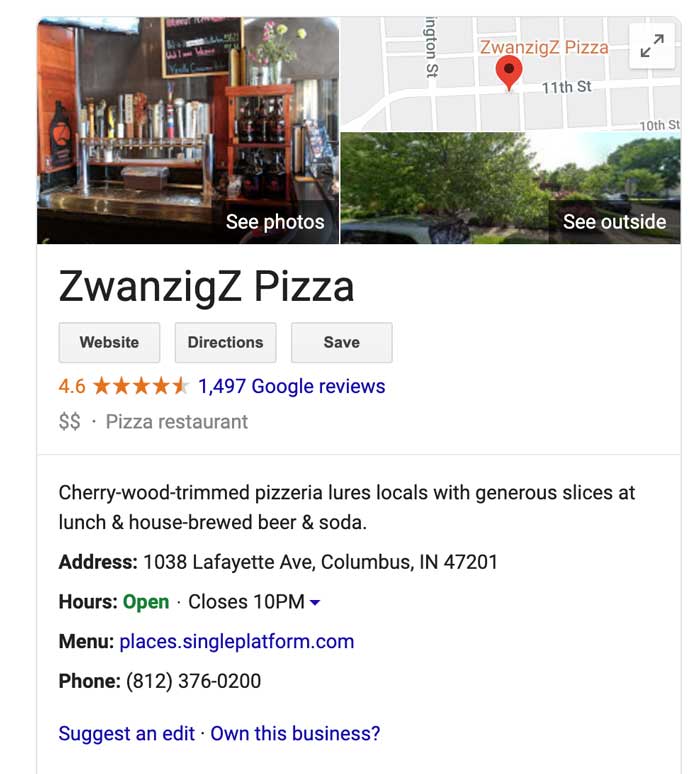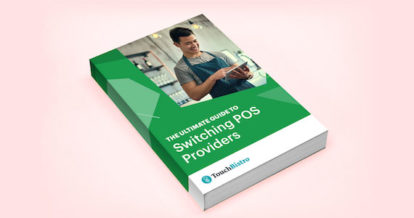A strong online presence for your restaurant isn’t optional anymore. Customers need to find you quickly and easily, across multiple platforms.
One way to boost your online presence? Restaurant SEO.
Your online profile is especially important as online ordering and food delivery disrupt the traditional restaurant model. Restaurants with online ordering systems are bringing in 130% more revenue than those who don’t and online ordering is growing 300% faster than dining in. Plus, 60% of diners are looking at a restaurant’s menu online, and 50% are checking the website.
In response, restaurant owners have started to invest time in search engine optimization – or restaurant SEO – to make sure their restaurant appears on Google and other search engines.
SEO may sound technical, but it doesn’t have to be! There are some simple practices you can put into place today to turn your online presence into a major traffic driver for your restaurant.
In this article, we’ll go over:
- What is SEO?
- The benefits of using SEO best practices for your restaurant
- The top seven tips to help your restaurant rank at the top of search results

What Is SEO?
SEO, which stands search engine optimization, is the process of optimizing a website to appear in search results on Google, Yahoo, and other search engines for terms related to your core business. The goal of this process is to get more traffic to your site. More traffic, more potential customers.
For example, if you own a pizza parlor in Kansas City, you’ll want to have your website optimized for certain key terms such as “pizza parlor in Kansas City” or “Best Pizza in Kansas City.” If your site is optimized for the terms people are actually searching for, then it will show up on the first page of Google for those key terms or keywords, making them more likely to click on your site – and, in turn, more likely to visit your restaurant in person. Especially if you have online ordering or reservations on your site.
Wondering if your restaurant’s website is optimized for SEO? You can use this free tool from BentoBox to find out.

The Benefits of SEO for Restauranteurs
Restaurant SEO may be a long-term play, but there are major benefits for your restaurant when you take the time. Some of these benefits include:
- Increasing traffic coming to your website
- Increasing online orders and reservations
- Building brand awareness
- Increasing customer engagement
- Helping you make more money
When your restaurant shows up for related terms – like our pizza parlor example – you can build off those benefits in your overall restaurant marketing strategy. And your marketing strategy as a whole will help new customers to easily find and learn about your restaurant.
SEO acts as an on-ramp for your restaurant business – an evergreen, organic (i.e. free) channel for new customers and growth.
7 Restaurant SEO Tips to Help Your Website Rank #1
There are literally hundreds of tips out there that people try to make their website rank higher in search results – and it’s all based on a scoring system Google holds behind lock and key. No one is 100% sure exactly what goes into that number one spot.
That being said, Google has given a pretty good idea of the formula.
In this section, we break down the core strategies and advice SEO experts use to optimize websites. Here are the best tips for your restaurant.
1. Create a Keyword Planning Roadmap
The first thing a restaurant should do is build out its restaurant SEO roadmap with keyword planning.
But what is keyword planning?
Keyword planning is laying out the target search terms you want your restaurant’s website to rank for. These can be single words (i.e. “wings”), but are more likely to include two, three, or more words (“best chicken wings in Houston”).
From there, you can use a free keyword planning tool to help you brainstorm other keywords that are similar to the ones you’ve laid out. This tool can help you prioritize certain keywords over others, based on how many people (on average) are searching for that term every month.
Here are some keyword planning tools that are either free or offer free trials:
When researching keywords, you’ll want to break out your targets into three types of keywords. High-intent broad restaurant terms, niche keywords, and branded keywords.
- High-intent broad restaurant terms: These are very broad but valuable keywords such as “restaurants in Kansas City,” “best Kansas City dinner spot,” etc.
- Niche keywords: Niche keywords are specific to what your restaurant offers. Think searches such as “pizza parties Kansas City,” “pizza game day deals,” etc.
- Branded keywords: This is optimizing for the name of your restaurant and related keywords. It’s not uncommon for restaurants to not hold the first few results for their restaurant name, and instead have Yelp appear in that first slot.
List out the terms you think are most impactful to having your restaurant appear in search results – and then verify that people are actually searching for these terms using the keyword planning tool.
Next, make a list of potential customers coming to your restaurant. This will help you identify pain points for each one and look for keywords specific to this demographic.
Here is an example for our pizza parlor:
| Potential Customer | Potential Keywords |
| Parent taking family out to dinner | “pizza family deals” “dine-in pizza specials” “family-friendly pizzeria” “family dinner Kansas City” |
| Mid-20’s person looking for spot to watch football game with friends | “pizza places that serve beer” “sports pub Kansas City” “where to watch the game Kansas City” “game-day specials Kansas City” “game-day pizza delivery Kansas City” |
| Parent looking to have a pizza party for child | “pizza parties Kansas City” “group deals pizza parlor Kansas City” “kids birthdays Kansas City” |
Again, you’ll want to then compare terms in keyword research tools to ensure you’re optimizing for keywords that are actually being searched.
Through early planning, restaurants can build a foundation of keywords to focus their attention on that drive real value to their business, setting themselves up for long-term growth and success.
2. Optimize for Local SEO
Between 2004 and 2006, Google changed up its results for local search – or results from searches that had location-based intent, like searching for a business in a specific city or town.
This is why location-based search almost always delivers results with the Google Map carousel feature.

Adding your restaurant website to all directories, restaurant review sites, and social media platforms with the same, standardized company information is a great – and simple! – step to optimize for these results.
Start with adding your business information to pages like:

All of these work together to help build your brand presence and identity, while also showing Google that your restaurant is a reputable business. It will also act as a form of defense against your main competitors in a local space, since your restaurant may appear before theirs.
3. List Your Restaurant on Review Sites and Encourage Reviews
Studies have shown that having reviews in search results increases the CTR (click-through rate) to those pages. Again, it goes back to more traffic = more potential customers.
Reviews are also an indicator for Google when ranking local search results. Google shows the highest-rated restaurants and businesses in many local search results. Google can even show your restaurant’s rating right on the search results page, helping you attract more customers.
Need another reason to work on getting more reviews? TouchBistro’s How Diners Choose Restaurants report found that 68% of restaurant goers said they visited a new entirely based on positive online reviews. That’s a lot of new traffic!
4. Get Other Websites to Link to Your Restaurant’s Website
Online reviews also help your restaurant with link building, another factor in search optimization.
If you have a marketing person on your team, you may want to go beyond reviews and try boosting your search optimization through link building.
So, what is link building?
Link building is the strategy of getting other websites to link back to your site.
Why is link building important for restaurant websites?
When other websites link to your restaurant’s site, it acts as a sign of trust from that website and signals to Google that your site is an authority on whatever topic the linked page is about. Think of it in terms of LinkedIn Endorsements; every link to your site is another endorsement in Google’s eyes.
The more links you have from other reputable sites, the more you’ll appear in searches for your target keywords.
5. Make Your Website Mobile-Friendly
Over 80% of the population used their mobile device to surf the Internet in 2018. That number has been growing for years – and is expected to continue. People are still using laptops and desktop computers for browsing, but more and more traffic is coming from mobile devices.
So what does this mean for your restaurant’s website?
Well, in 2018, Google made a large switch to their search formula based on this mobile trend. Now, the mobile view of your site is more important than your desktop view.
The bottom line is that any sites that are not mobile-friendly, are less likely to appear in searches.
So how do you make sure your site is mobile friendly?
If someone else builds or updates your site, confirm with them that your design is “responsive” so the content on each page adjusts to the screen size of the visitor’s device.
If your site is of the DIY variety, look at responsive frameworks when building or updating your website. Many popular WordPress themes are now pre-packaged with responsive frameworks, which helps pages appear optimized for both mobile and desktop visitors.
6. Test Your Online Ordering System
With the increase of popularity with online ordering, it’s no surprise so many restaurants have added an online ordering system to their website.
Just as important as it is to have online ordering, it’s also important to ensure it’s easy to use for diners to place an order – if not, people will abandon their cart for a simpler ordering experience with another restaurant.
While this obviously is a loss of revenue and customers for businesses, it’s also hurting your search results. Google recognizes when a user is frustrated and leaves a page. The search engine prioritizes pages and websites that have lower bounce rates.
This is where user testing comes in. You can build your own ordering system or outsource it to a website builder or UX designer, but make sure that you have multiple people go through the ordering process, step by step. That way, you’ll know the process is a smooth one – without glitches or confusion.
7. Launch a Blog
A typical restaurant has only a handful of pages: a homepage, about us, menu, upcoming events, contact information, maybe a review page.
But what about a blog?
If you have someone on your marketing team and want to invest more time and energy into search optimization, consider adding a blog to your site. It can help you improve search rankings, drive more traffic, and increase your customer base.
What would a restaurant write about? Well, that’s where we get a little creative.
You could write about topics that are important to your restaurant mission statement, like locally sourced ingredients or community involvement. Or, you could use the blog to promote new marketing campaigns. For example, maybe you’re hosting a series of trivia nights or open mics for live music – write a post about it! Or let’s say you’re launching a new pop-up restaurant. Your restaurant can publish a piece on the best pop-ups in your city with yours as number one.
These seven tips will help you build a strong foundation for your restaurant SEO, driving new revenue and awareness to your business. The next step is figure out how to handle all that extra traffic coming through your doors!
Free social media templates for your restaurant
Sign up for our free weekly TouchBistro Newsletter







